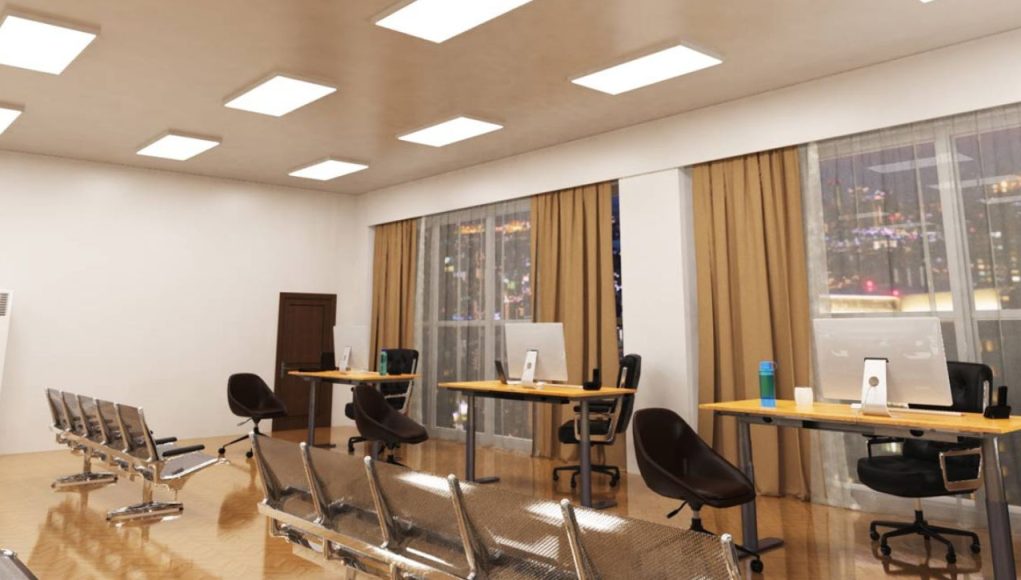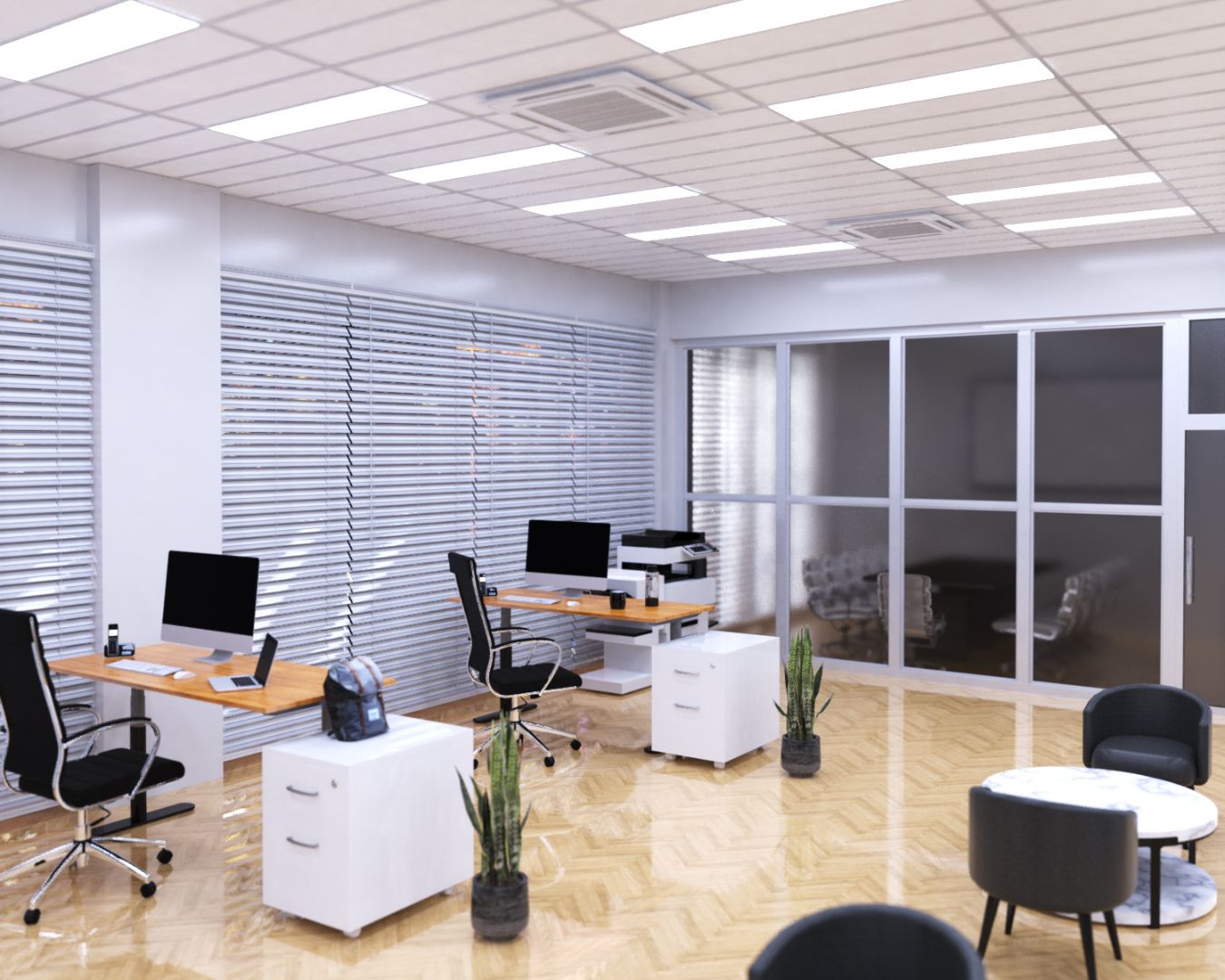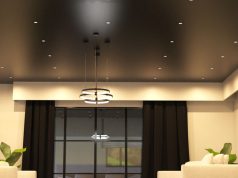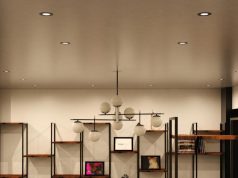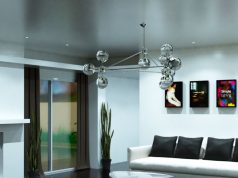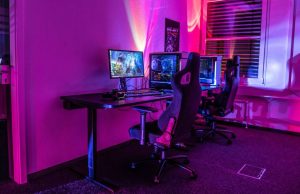Did you know that if you have coworkers or employees who are consistently grumpy, consecutively hit the lowest productivity marks, or frequently experience migraines, it might not be a personal issue?
The problem might be your office lights.
That’s right. There’s a good reason why lighting design has now become a central part of workplace planning, on par with furniture and floor layout. Workplaces are realising how crucial lighting is for the business.
That’s because smart office lighting offers a way to create spaces that are efficient, flexible, and genuinely pleasant to work in.
In this guide, we’ll give you a comprehensive walkthrough on how to optimise your lights to work in your favour and shape the mood, productivity, and well-being in your office.
Key Goals of Office Lighting
We’ve already established that good office lighting is more than just ensuring that people can see their paperwork. So, what should office lighting actually achieve?
Here are four goals that stand out in most UK workplaces:
1. Productivity
Poorly lit spaces lead to eye strain, headaches, and fatigue. All of which significantly reduces employee performance. Lighting should support concentration to achieve high levels of productivity. The solution?
Ensure correct light levels across workstations and collaboration areas. With this, you’re not just making the office functional; you’re actively supporting better outcomes.
2. Wellness
More and more UK companies are adopting “human-centric lighting” (HCL). This approach mirrors natural daylight patterns, supporting circadian rhythms and boosting mood. The result?
People are less likely to feel drowsy mid-afternoon, thanks to well-designed lighting.
3. Flexibility
Gone are the days when the office meant rows of identical desks on a single floor of a building. Modern offices have now adopted the concept of “zones,” including informal breakout areas, private booths, and collaborative meeting spaces.
Each of these zones has different lighting needs, which means flexibility is a must. We’re talking dimming controls, colour-changing, and personalisation options.
4. Energy Efficiency
Energy costs are rising in the UK (the world, really). This means that efficient lighting is now not only environmentally responsible but also financially critical. If you’re still using fluorescent tubes, you’re missing out on massive energy savings.
Recommended Illuminance & Lux Levels
When planning lighting, designers often work with lux. It’s a measure of illuminance, or how much light falls on a surface. This should not be confused with lumens, which is the amount of light emitted by a source, but does not take into account the surface.
Getting lux right is the key to good lighting—or at least one of them. Too little light, and workers strain their eyes; too much, and the light feels harsh and uncomfortable.
The following lux levels are ideal for the various office spaces, based on the CIBSE (Chartered Institution of Building Services Engineers), a widely used UK standard.
General office desks: 500 lux is typical for detail-oriented tasks like drafting, accounting, or design work.
Meeting rooms: (300 – 500 lux) Balanced to support both presentations and face-to-face interaction.
Corridors and circulation areas: (100–200 lux) Enough for safety, without wasting energy.
Reception areas: (200–300 lux) Helps create a welcoming first impression without being overpowering.
Breakout / informal zones: (200 lux) A softer level, leaning more on relaxation and casual conversation.
Task lighting: (Up to 750 lux) Useful for precision tasks where extra clarity is needed.
Remember that lighting, especially in an office setting, is not just about brightness; it also affects the overall ambience.
Minimising Glare, Shadows & Flicker
Glare: one of the most common complaints in poorly lit offices. Anyone who’s tried to work at a computer with an overhead fitting glaring off the screen knows how distracting it can be.
But it’s not without a solution. In fact, we’ve listed some methods to reduce glare in your office.
Techniques to Reduce Glare:
Indirect Lighting: Bounce light off ceilings or walls rather than shining it directly onto workstations. Linear suspended fittings with uplighting are popular in modern UK offices for this reason.
Low-UGR Fittings: Select luminaires rated with a low Unified Glare Rating (UGR < 19 is standard for office environments).
Task Lighting Balance: Don’t just rely on bright overhead sources. Use desk lamps to supplement general lighting.
Shadow Control:
Good lighting design ensures that no area is left in shadow, particularly in meeting rooms or collaborative workspaces. Relying on overhead lights alone can result in dark areas over work surfaces.
What you want to do is combine ceiling panels with wall washers to help avoid unwanted contrasts.
Flicker-Free LEDs:
Cheaper LEDs may flicker at high frequencies, which some people are sensitive to. Those migraines and eye strains your employees are experiencing? Most probably caused by flickering lights.
Light fixtures constructed with high-quality LED chips are more likely to be flicker-free, ensuring a healthier work environment.
Daylight Integration & Window Considerations
What is the best light you can have for your office? Daylight. Nothing can beat natural light. It is one of the biggest assets an office can have. But it doesn’t mean you can use it thoughtlessly.
But think about it… who wants to work in a windowless office? A well-lit workspace with views of the outside world improves mood and reduces reliance on artificial lighting.
It’s a win for both the company and the employees. However, uncontrolled sunlight can cause glare and overheating.
Smart Strategies:
Daylight Harvesting Sensors: These adjust artificial lighting output in response to available natural light. The fixture will gradually dim as natural light pours into the space, maximising energy savings without losing the desired brightness.
Blinds and Shading: Use automated blinds to control glare from south-facing windows. Perforated roller blinds are popular in UK offices because they cut glare but still allow outside views.
Avoid Overheating: Large glass facades can lead to excessive solar gain. Pair shading systems with efficient cooling.
Desk Placement: Position desks perpendicular to windows where possible, reducing direct glare on screens.
Integrate daylight into your office to save energy and create a more natural and uplifting environment for your staff. Just make sure that you’re able to manage it well.
Zoning & Flexible Lighting Systems
One of the mistakes in office lighting is using a single lighting strategy across the entire space instead of creating “zones.” Each zone should have tailored lighting for its primary activity.
Common Zones & Lighting Needs:
- Focus Zones: (desks, quiet booths) Bright, uniform, glare-free lighting.
- Collaboration Zones: (meeting rooms, project tables) Adjustable lighting, dim for presentations and brighter for brainstorming sessions.
- Breakout Areas: Soft, warm lighting for relaxation.
- Circulation: (hallways, stairwells) Motion-sensor lighting to save energy.
Individual Control
Do you know this one method to improve employee satisfaction? Give them control over their own lighting. Using smart systems can help make this more seamless and streamlined.
Think desk-mounted controls, smartphone apps, or occupancy sensors.
Colour Temperature & Spectral Quality
The colour temperature of your lights can set the mood, tone, and atmosphere of a space. That’s why proper lighting is very important, especially in office settings.
- Warm white light (2700–3000K): Ideal for breakout areas, as it creates a relaxed mood.
- Neutral/natural white (3500–4000K): A good compromise for meeting rooms, balancing focus with comfort.
- Cool white light (4000–5000K): Best for task areas, as it promotes alertness and concentration.
Smart, tunable white systems go a step further, allowing the colour temperature to change throughout the day: cooler in the morning for alertness, and warmer towards evening to prepare staff for winding down.
Spectral Quality & Wellbeing
This focuses on the Colour Rendering Index (CRI) of your lighting. This indicates how natural the colours of the surroundings look while under artificial lights. A high CRI number (>80) means the colours pop up well.
Maintenance & Upgrades
Even well-designed office lighting won’t serve you long if it’s not properly maintained.
Routine Maintenance
Cleaning: Dust and dirt can reduce light output by up to 30% in just a couple of years. For fast cleaning, opt for simple fixture designs that can be easily wiped clean with a microfibre cloth.
Lamp Replacement: Although LEDs last much longer than fluorescents, they still degrade over time. Factor in replacements at around 50,000 hours (10–12 years in typical office use).
Control System Checks: Smart systems rely on sensors and software. Regular testing helps prevent issues such as lights failing to dim properly or motion sensors not detecting movement.
Upgrades & Retrofits
From Fluorescent to LED: Many UK offices are still (sadly) running T8 fluorescent tubes. Retrofitting with LED panels can significantly reduce energy use and enhance light quality.
Adding Controls: Installing presence/movement detectors, daylight sensors, and dimming systems can enhance the efficiency of your lights.
Future-Proofing: Don’t think of your lights in short terms. Look for fittings with upgradeable drivers or modular designs. This means you can replace the “brains” of the system without having to swap out every luminaire.
Wrapping It All Up
Smart office lighting is not a passing trend. It’s one of the crucial factors that can affect both personal well-being and work productivity of everyone in the office.
For office managers, it offers measurable benefits in energy savings and reduced maintenance. For employees, it means fewer headaches, greater comfort, and improved productivity.
Ensuring that your office lighting is optimised for productivity, wellness, flexibility, and efficiency will enable it to stand the test of time.
So, whether you’re planning a retrofit in a small office or a new build for a large corporate headquarters, the right lighting choices will help you create a workplace that’s bright, healthy, and future-ready.
Simple Lighting supplies a wide range of LED panels, smart controls, and statement office luminaires designed to meet UK standards and client expectations. Check our website today to start browsing your next office lights!


